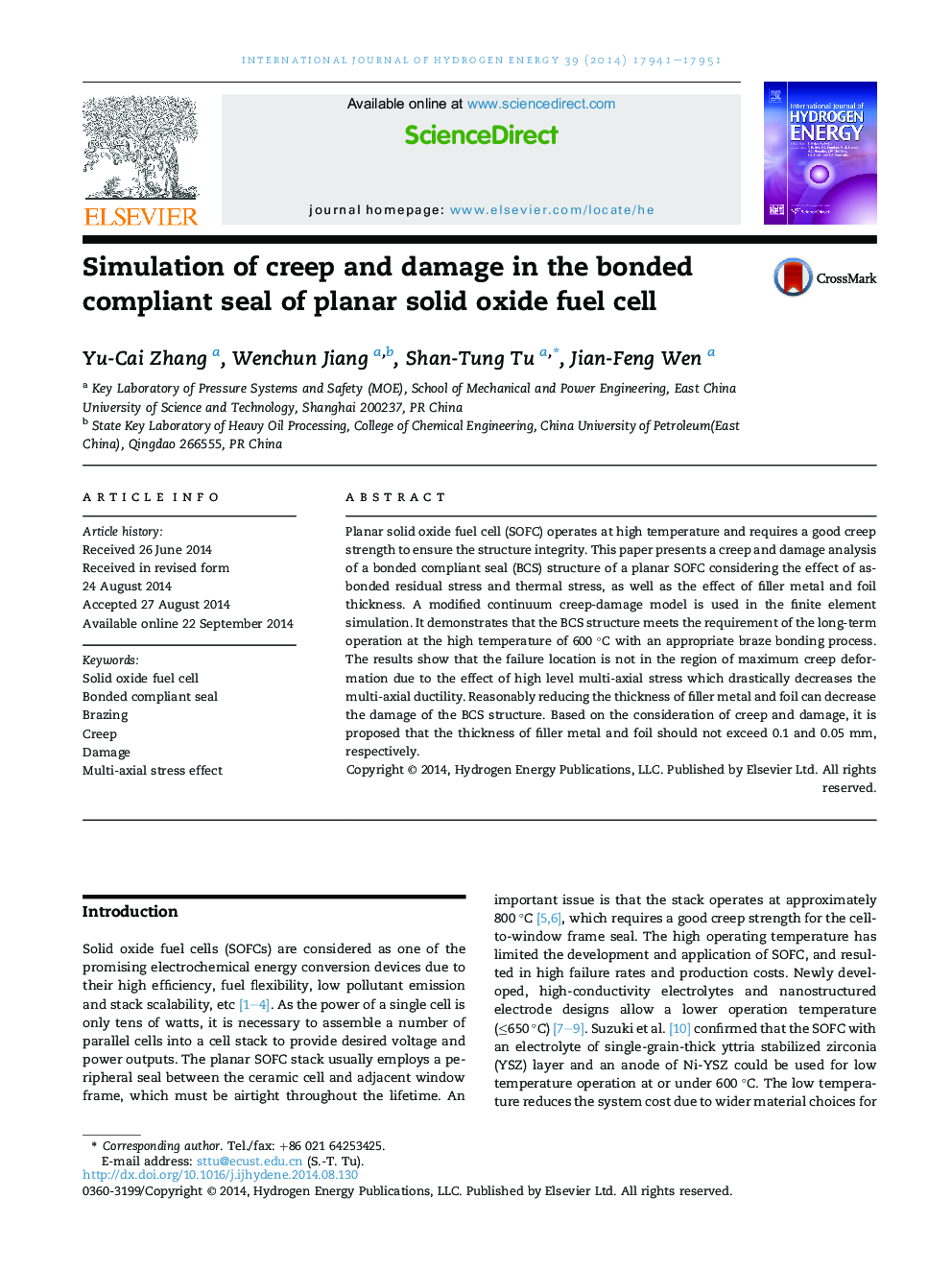| Article ID | Journal | Published Year | Pages | File Type |
|---|---|---|---|---|
| 1271891 | International Journal of Hydrogen Energy | 2014 | 11 Pages |
•Creep damage in BCS structure is simulated using a continuum damage model.•The effect of the multi-axial stress on the creep and damage has been considered.•Failure is not located in the region of the maximum creep for the multi-axial effect.•Reducing the thickness of filler metal and foil decreases the creep and damage.•The BCS structure meets the requirement of long-term operation.
Planar solid oxide fuel cell (SOFC) operates at high temperature and requires a good creep strength to ensure the structure integrity. This paper presents a creep and damage analysis of a bonded compliant seal (BCS) structure of a planar SOFC considering the effect of as-bonded residual stress and thermal stress, as well as the effect of filler metal and foil thickness. A modified continuum creep-damage model is used in the finite element simulation. It demonstrates that the BCS structure meets the requirement of the long-term operation at the high temperature of 600 °C with an appropriate braze bonding process. The results show that the failure location is not in the region of maximum creep deformation due to the effect of high level multi-axial stress which drastically decreases the multi-axial ductility. Reasonably reducing the thickness of filler metal and foil can decrease the damage of the BCS structure. Based on the consideration of creep and damage, it is proposed that the thickness of filler metal and foil should not exceed 0.1 and 0.05 mm, respectively.
